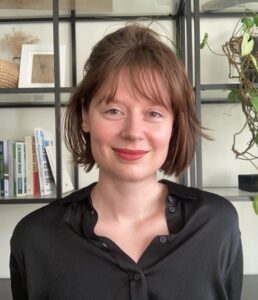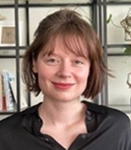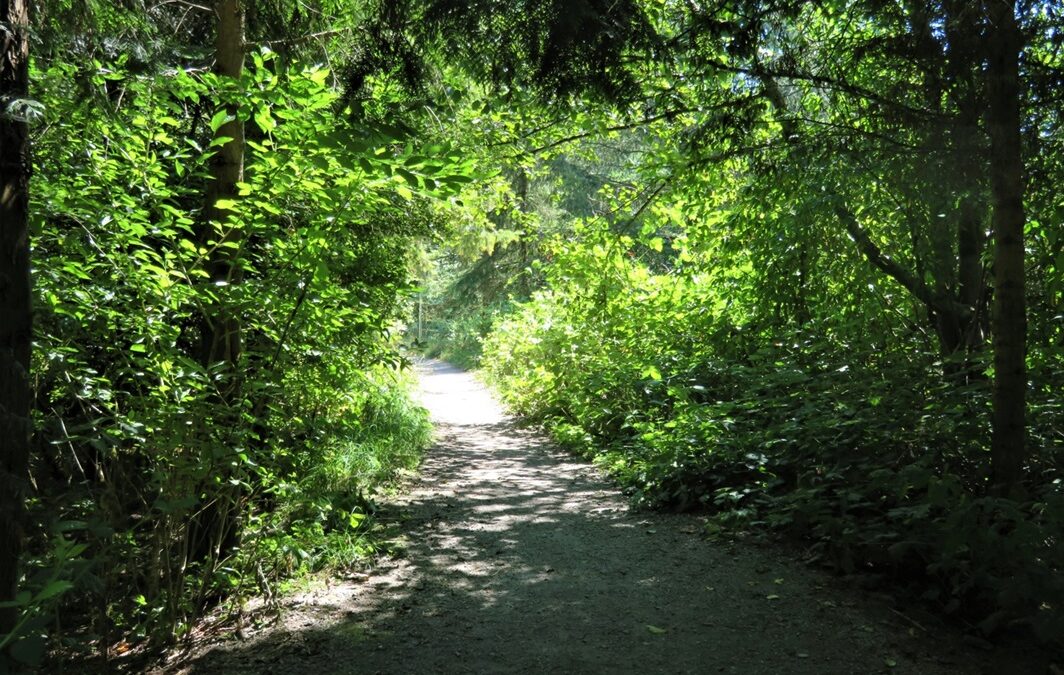Listen to the author read this article (9:14)
“You’ll feel some pressure,” said the doctor.
I was lying on my back; the room was dark, save for one overhead light. “Take a deep breath,” she counselled.
I gasped. The nurse and the anesthesiologist shot each other a look; one adjusted the IV snaking into my arm.
A few painful seconds passed. Finally, I was wheeled to a waiting room. I fumbled with a box of apple juice, trying to puncture it; my hands were shaking uncontrollably, a side effect of fentanyl.
The doctor whipped back the curtain. I looked up, hopeful, waiting for the results of three weeks of injections, bloating, and wayward hormones.
“I’m sorry,” she said. “The egg retrieval was unsuccessful.”
**
I was born in 1988 to a world of 5 billion people. That year, the Intergovernmental Panel of Climate Change (IPCC) was established. Growing up, my dad wrote about environmental issues for a living; Bruce Cockburn’s “If a Tree Falls” was featured in many living room dance parties.
Conventions on Climate Change (COPs) came and went, as did a childhood. Having emerged from our youth with the dust mostly settled, my peers and I began to make moves that would impact the rest of our lives: where to live, if or whom to marry, and whether to have children.
This is the story of that last crossroads—considered in the context of a changing climate.

Anna Bohn
Studies show that a quarter to a third of young people are hesitant to have kids[1], citing reasons both personal and global.
For some, it’s linked to the ecological crisis[2] and all that may entail: food and water scarcity, social instability, and war. For others, it may be religious conviction: about 1-in-4 US adults believe they are living in “end times.”[3]
In one of my first apartments—roach-infested but cheap—I kept a stack of The Watchtower, a Jehovah’s Witness periodical; as a designer, I was fascinated by how one graphically portrays the sublime. My landlady took note and invited me to a convention. “Haven’t you noticed all the natural disasters?” she asked. Witnesses believe that sometime after 1914, the age of Satan began, the force of which is fueling floods and hurricanes. I couldn’t help but notice the poetic parallel to the Industrial Revolution, powered by a force from deep underground.
For me, the hesitation came, in part, from a realization that the lives my peers and I expected, we may not inherit: generations prior bought them with the ecological credit card, and now we are severely in debt.
**
In 2021, a heat dome cupped the BC coast; working at my desk with no air conditioning, I resorted to putting my feet in buckets of cold water.
A client dropped by, and we commented on the weather. “Climate change,” I said, determined to meet his eyes. He agreed, citing overpopulation.
“No!” I exclaimed, surprising myself. “It’s not. Or at least, it doesn’t have to be. Yes, how we eat, heat our homes, and get around doesn’t scale. But redesign the system, and everything changes.”
Shortly afterwards, I learned that the carbon footprint was popularized by Ogilvy, a marketing agency working for British Petroleum. I came to suspect that pointing out the impact of children was an extension of their strategy, forcing parents into a place of hypocrisy and pulling focus from the systemic failures at play.
**
Washing the dishes one evening, I told my dad my hesitation. He said his generation had felt the same. He met my mother at the height of the Cold War when it was easy to imagine bombs overhead. Some questioned the morality of having kids, “but,” he said, “the war ended.”
Others said children might grow up to contribute to climate solutions as a way of justifying having them. It was a calculation I wasn’t comfortable with: does a child owe the world for the right to be born?
“The next generation isn’t going to fix it,” said one friend. “Our generation couldn’t.”
**
Clicking through the news, I came across a countdown: we had a 1% chance of limiting warming to 1.5 degrees.[4]
Most have heard of fight or flight, but there is a third option: freeze. Still hesitating, I talked to my doctor about freezing my eggs, hoping to delay a decision. Tests were run, then more tests; it seemed all wasn’t as it should be. Finally, I saw a fertility specialist. “You have less than a 10% chance of ever becoming pregnant,” she said.
**
Over the next couple of years, my peers began having kids. “It’s like popcorn,” said a friend. “At first, it’s a pop, and then it’s pop-pop-pop-pop!”
Those little kernels became Drew, two-and-a-half, Marcus, eighteen months, Micheala, eighteen months, and Callum, four months.
When having a kid, the amygdala—the part of the brain that scans for threats—becomes more active. And with good reason—so many things can harm a child: a poisonous mushroom, suckled by a small, exploratory mouth; a set of stairs; a climate crisis. “She’s so little,” said one parent. “There’s so much that can happen to her.”
Drew’s mother took her to Hawaii, a place she herself had loved as a child. Clad in a snorkel and fins, she expected to see a rainbow of sea life under the waves. The reality grieved her: a few stragglers living amongst dead coral, the sole survivors of what was once a thriving civilization.
“I want him to wonder at the world,” said Marcus’s mother, “the beauty of it all. But I’m worried that if he does, its destruction will crush him.” And the pain of never knowing all that was.
Having kids incites fears they will suffer, but also live in a world of suffering. Reading the IPCC reports, the numbers numb: millions of species at risk for extinction; millions of people at risk of losing their homes, livelihood, or lives.
I later learned that women’s hormones are acutely attuned to the environment in order to answer the question, “Is it safe to get pregnant?”
**
Last winter, Arctic winds descended the Pacific. I laced up my shoes and went for a run; my usual route traced the seawall out to the Inukshuk and back. Whitecaps crowned the waves, and the ocean rammed into the path, partially flooding it—leaving behind bits of seaweed, driftwood, and plastic. There was a potent energy in the air: an anger, an outrage.
Some say anger marks a boundary crossed. After the egg retrieval, I was angry at the doctor’s insistence I continue with IVF right away and society’s pressure to have kids coupled with its lack of support.
And, in parallel, I was angry at those who could do more for climate but didn’t. One study showed almost 60% of young people feel betrayed by government action.[5] I imagined the rich and powerful building bunkers for their own kids, thinking they could shelter them from the worst possible outcomes.
**
Following the procedure, the ecological crisis was a balm—but not a cure—for my grief, as I reassured myself I need not bring another person into the world. I couldn’t help but connect it to the ecological crisis: from a micro to a macro scale, it was the ache of a premature ending. “Mother Nature is no longer as fertile as she once was,” I thought, “and neither am I.”
Not having children brings up so many questions about mortality, significance, being remembered, and leaving a legacy. Climate change, like other existential threats, forces us to stare at the void.
“A lot of things are meaningless if you don’t have a long-term future.”
—Will MacAskill, philosopher
**
“What does your grief look like?” asked the counsellor. I’d booked a therapy session; to my surprise, it began with a guided meditation that veered on hypnosis. Unconsciously, I began to describe an ocean—vast, blue, deep, and primordial.
Later that day, I heard the story of a childless woman in her seventies: she had tried to convince fertility clinics that she and her same-sex partner were worthy of being parents, but this was the eighties, and her hope faded with the years. Needing relief, she signed up for a spiritual retreat up the Georgia Strait. An elder took her out to sea in a canoe; the water was still, blurring where the ocean meets the sky.
“Give the ocean your grief,” he said.
She started crying, quietly at first, and then let her pain well up in sobs. Finally, the storm subsided, and a peaceful silence hung in the air. The elder turned them towards the shore. Later that month, she started menopause.
While walking that evening, I felt a pull toward the sea. I began to drift towards the beach, not stopping when I reached the shoreline; my shoes went under, and then my shorts. It was an attempt at merging with something bigger than me: surrendering my small sorrows to the ocean, which long ago, was the source of life and now, protects us from the worst of the greenhouse gas effect.
**
The IPCC reports draw out many different pathways, contingent on one important variable: what will we do next?
At the height of my indecision, I wished for life to decide, and it did. I had an intuition that motherhood wasn’t my path—a feeling that proved prescient. Today, I have accepted this. But perhaps there is still a mother in me: one that can help bring forth a more sustainable future.
[1] Americans Are Having Fewer Babies. They Told Us Why.
New York Times | Source: Morning Consult survey of 1,858 men and women ages 20 to 45
https://www.nytimes.com/2018/07/05/upshot/americans-are-having-fewer-babies-they-told-us-why.html
[2] Climate anxiety in children and young people and their beliefs about government responses to climate change: a global survey
https://www.thelancet.com/journals/lanplh/article/PIIS2542-5196(21)00278-3/fulltext
[3] About four-in-ten U.S. adults believe humanity is ‘living in the end times’
[4] Less than 2 °C warming by 2100 unlikely
https://www.nature.com/articles/nclimate3352
[5] Climate anxiety in children and young people and their beliefs about government responses to climate change: a global survey
https://www.thelancet.com/journals/lanplh/article/PIIS2542-5196(21)00278-3/fulltext
 Anna Bohn co-founded Etho Studio, a design and communications agency for the built and natural environments. Anna is also the creator and developer with BCIT of the Lighter Footprint App, currently being piloted as an aid to track and lighten the environmental footprints of British Columbians.
Anna Bohn co-founded Etho Studio, a design and communications agency for the built and natural environments. Anna is also the creator and developer with BCIT of the Lighter Footprint App, currently being piloted as an aid to track and lighten the environmental footprints of British Columbians.


